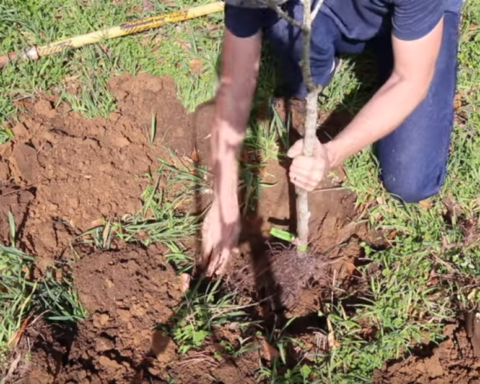There are fewer times harder on a gardener than winter. As we rise out of January’s frigidity, we are experiencing longer and sunnier days that make me yearn to get some seed in the ground. These warm days are interspersed with freezing rain (three times this week) and a few snow storms that remind me that it’s not time just yet.
But it will be that time soon enough. So in the interest of extending your growing season (and thereby increasing your harvest without digging up more of your yard), I would like to recommend a few things you can plant (or get ready to plant) to get a jump on spring.

Spinach is a favorite early crop because it germinates easily and is quite frost resistant. If you like spinach omelets or salads, you’ll want to start more than you think you’ll use. This is mostly because you’ll “cheat” by grabbing a few leaves here and there before they are really ready. Spinach is also a good crop to put down where your tomatoes or peppers will go, because it’ll bolt (go to seed) just as the ground is ready to receive the warmer weather crops.
Lettuce is similar. I have found that the “leafy” varieties are better than “head” types if you are looking for a quick harvest.
Radishes are an early favorite, and you don’t have to limit yourself to the red globe types you find at the grocery store. Radishes come in many shapes, colors, and flavors. They also feature varieties that can mature in as little as three weeks. If you hate to thin your plants as much as I do, mix radish seeds in with your lettuce and spinach seeds when you plant. That way harvesting will automatically thin your rows.
Chard, a relative of the beet, can provide some early (less than a month after planting) greens for cooking as well as a perpetual harvest of stalks. Chard comes in red, white, and yellow stalks as well as green, so don’t be afraid to add a little color to what is liable to be a pretty green garden at this point.
It’s hard to beat peas as an early veggie in the garden. They are surprising resilient and very easy to harvest repeatedly. If you like stir fry, snow peas and other “pod” peas are what you’ll want to plant. They also mature more quickly than shelling peas.
That all said, it’s easy to plant too early. And by too early, I mean that a heavy frost or a snowstorm may kill your whole crop. That’s why plastic covers or even milk jugs with the bottoms cut out (just set them over the plant overnight) are a must if heavy frost is in the forecast.
Or maybe they aren’t. On the one hand, there’s nothing more frustrating than looking back from your “frost date” to discover that you could have had crops in the ground for two or three weeks safely. On the other, if your crop gets killed off, just plant again. It’s not like you’re going to go broke replacing a package or three of radish seeds. Especially if you save your own year to year.
So that’s weeks away for some of us, months away for others. But what if you have the itch right now and just need to plant something? I have two recommendations:
First, plant something indoors for transplanting later. It might be grape cuttings, it might be wildflowers. It might even be lettuce and spinach in little plastic beer cups. If you’ve got the urge, don’t suppress it. Find something that you can watch grow over the coming cold weeks. It’ll do wonders for your sanity.
Second, plant something that you intend to keep indoors. Plant something crazy, just for the heck of it. Yesterday, I planted a package of venus flytrap seeds in a covered container in my sunroom. Will they grow? I hope so. What if they don’t? That’s ok, too. Try cacti or exotic flowers or lilies from bulbs you dig out of the garden.
Just plant something.
And if it dies, or if it doesn’t come up, plant it again until you get it right.










4
For indoor plant: root a pineapple top!
That’s definitely a fun project. Avocado pits are good as well.
5
Good reminder to start peppers and tomatoes. I like the spinach technique, also used peas when I planted the poblano grove last year. Peas fixed more nitrogen, combined with good mulch to let me harvest dozens into October.